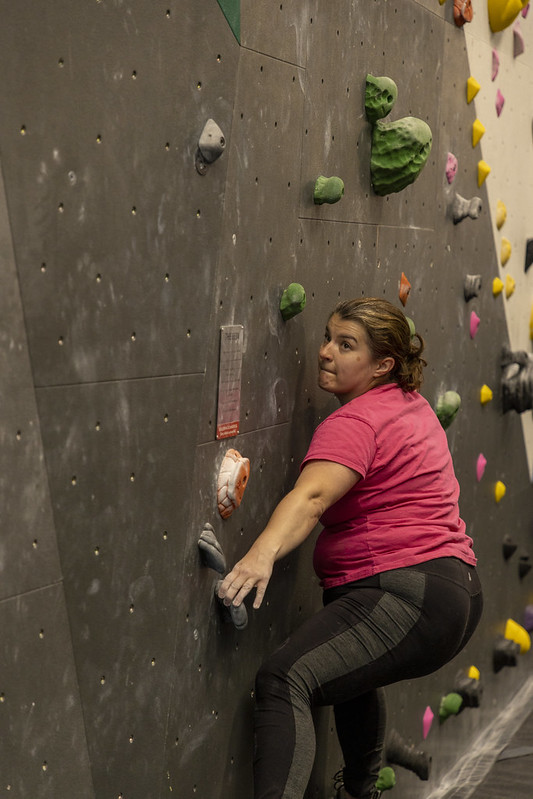In this guide, we’ll explore how indoor rock climbing not only boosts morale but also enhances communication, builds trust, and improves overall team performance by tackling fears and challenges collectively. Get ready to discover how climbing can transform your workplace!
Understanding the Basics of Indoor Rock Climbing
Indoor rock climbing is a thrilling sport that challenges individuals physically and mentally. It occurs in a controlled environment where participants can engage in an activity that is accessible to various skill and fitness levels. In a climbing gym, individuals face walls of different heights and difficulties, allowing them to push their limits alongside their teammates.

Safety and Equipment
Each climber is provided with essential gear, such as harnesses and climbing shoes, to enhance their experience. Beginners benefit from guidance by trained instructors who explain climbing methods and ensure everyone knows the techniques necessary for a great experience. Difficulty may be a concern, but indoor climbing gyms are equipped with features designed to support accessibility and keep climbers focused on achievement.
The Different Types of Climbing
When it comes to indoor climbing, there are activities suited for everyone, including bouldering (where climbers scale short walls without ropes), top-roping (climbing with a rope anchored at the top), and lead climbing (where climbers clip into anchors as they ascend). You can choose the style that best suits your team’s comfort level and prior experience, enabling everyone to participate fully.
Benefits of Indoor Rock Climbing for Team Building

Climbing is ultimately a team endeavor where communication plays a vital role. Participants must convey their moves and intentions clearly, creating a supportive yet challenging environment that enhances communication skills. The need for collaboration encourages interaction among all team members regardless of their typical work relationships.
2. Builds Trust
Trust is foundational in any successful team environment. In climbing, team members rely on one another so much that it naturally fosters stronger bonds. Whether individuals are securing or providing support, reliance on each other cultivates an environment of trust that seamlessly transitions to daily teamwork.
3. Fosters Problem Solving
Every climbing route presents challenges that require strategizing for success. Collaboratively navigating different routes helps team members develop valuable problem-solving skills. This collaborative approach instills adaptability and ingenuity, critical traits in any work environment.

As thrilling as climbing can be, it does come with intimidation. Many participants harbor fears of heights or self-doubt regarding their physical ability. Tackling these fears in a group setting creates opportunities for vulnerability, paving the way for empathetic connections among colleagues who support one another.
5. Develops Leadership Skills
Through climbing activities, participants often take on leadership roles when they guide others, devise strategies, or provide encouragement. The sportsmanship encouraged through teamwork allows individuals to recognize their leadership potential and hone their strengths in a casual environment.

6. Breaks Down Barriers
Rock climbing is an equalizer, allowing everyone to tackle the same challenges side-by-side. This shared experience encourages openness, cultivating an inclusive atmosphere that breaks down barriers—the very barriers that often exist in corporate environments.
7. Enhances Confidence
Reaching new heights is, quite literally, a confidence booster. Team members leave climbing sessions feeling accomplished, which invigorates them for future challenges. This renewed confidence can translate into increased enthusiasm and productivity back in the workplace.
Addressing Common Concerns about Indoor Rock Climbing
While indoor climbing offers an opportunity for growth, potential participants may still hesitate due to misconceptions or fears. Here are some proactive steps to ease concerns:
Fear of Heights:
For those daunted by height, they ease into the experience by starting with shorter walls. Begin with lower climbs to gain comfort and control over the ascent, building resilience.
Physical Fitness Level:
Climbing isn’t just for athletes—people of all fitness levels can engage in the activity. The best climbers don’t always have the most strength; they may simply be the most strategic. The climbing community is welcoming and supportive of newcomers.
Age and Body Type:
Climbing caters to diverse ages and body types. Routes can be adjusted to accommodate different skill levels and capabilities, and a diverse group enhances the experience.
Fear of Heights:
For those daunted by height, they ease into the experience by starting with shorter walls. Begin with lower climbs to gain comfort and control over the ascent, building resilience.
Physical Fitness Level:
Climbing isn’t just for athletes—people of all fitness levels can engage in the activity. The best climbers don’t always have the most strength; they may simply be the most strategic. The climbing community is welcoming and supportive of newcomers.
Age and Body Type:
Climbing caters to diverse ages and body types. Routes can be adjusted to accommodate different skill levels and capabilities, and a diverse group enhances the experience.

Building a Culture of Teamwork through Climbing
The transformation experienced during climbing doesn’t stop when participants return to work. Strive to promote an enduring culture of teamwork by reinforcing shared experiences in the workplace. Here’s how to solidify the gains made:
Regular Team Building Events:
Create an annual calendar of team-building activities to develop ongoing relationships and continuous teamwork.
Incorporate Climbing into Regular Meetings:
Use climbing analogies or visuals in meetings as a way to connect over shared experiences.
Celebrate Achievements:
Recognize and appreciate both small and large team accomplishments. Understanding that every success contributes to team identity and further strengthens collaboration
Building a Culture of Teamwork through Climbing
Indoor rock climbing is more than a physical challenge; it’s a profound opportunity for team building that creates the connections required for organizational success. The lessons learned during climbing experiences have the potential to revolutionize workplace dynamics. Challenge your team to embark on this exhilarating journey and seize the chance to build trust, enhance communication, and create a culture of collaboration.
Book your team climbing experience now! Visit us here to get started! Stepping out of your comfort zone in climbing, as in work, can lead to remarkable transformations. Each ascent symbolizes the potential for greatness—together, as a team, there is no peak you cannot reach!
